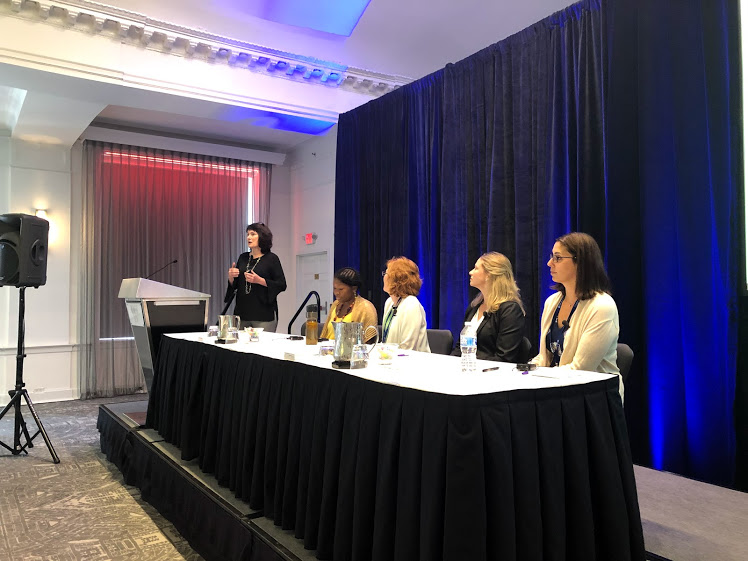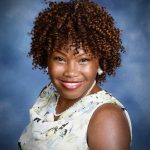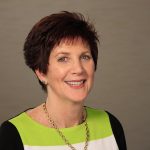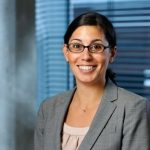Rare Disease Advocacy: There’s Power In Numbers

The “Your Voice Matters” panel at the LCA Family Conference in July featured, from left, SSH Executive Director Annette Tonti (moderator); Terri Booker, Advocate for Sickle Cell Anemia; Jill Dolgin, Head of Patient Advocacy at AGTC; Emily Milligan, Executive Director at the Barth Syndrome Foundation, and Jamie Ring, Head of Patient Advocacy at Spark Therapeutics, Inc.
Tell your story. Tell your story again. Then tell it again.
That’s the beginning of advocacy for rare disease.
“You have to be assertive and speak up. You don’t have time to waste!” advocate Terri Booker implored her audience at the Sofia Sees Hope second LCA Family Conference.
Booker, a lawyer and an advocate for people living with Sickle Cell Disease (SCD), spoke as part of a four-member, patient-advocacy panel called “Your Voice Matters!” moderated by Sofia Sees Hope Executive Director Annette Tonti.
More than 80 people from 15 states and Mexico attended the July 27 conference in Philadelphia. The event brought together people living with Leber congenital amaurosis (LCA), inherited retinal diseases (IRDs), SCD, which is a group of inherited blood disorders, and Barth Syndrome, a rare genetic disorder that can cause heart failure, muscle weakness and infection.
These diseases are among the 7,000 rare diseases affecting 25 million Americans.
Kristen Steele hired a lawyer and filed a lawsuit in order to make her career dreams come true. Read her story here.
“Imagine the impact if we all get together and say, ‘We’re here! Twenty-five million people who can vote!’ ” said Booker, who works professionally and personally to help seek justice in the Philadelphia community.
Live long with advocacy
She co-founded the Young Adult Sickle Cell Alliance after her last hospitalization for SCD-related problems in 2012. Doctors with no answers asked what she usually did when symptoms occur, and she replied: “I thought I was here to get help from you.”
SCD is a group of disorders that affects hemoglobin, the molecule in red blood cells that delivers oxygen to cells throughout the body, according to the National Institutes of Health (NIH). People affected have atypical hemoglobin molecules called hemoglobin S, which can distort red blood cells into a sickle or crescent shape.
“I’m talking about it every chance I get,” she said.
 If someone notices she’s limping, she tells them she’s got sickle cell, a genetic disorder, “where a whole bunch of cells get together and attack your body, your heart, your eyes, your joints.”
If someone notices she’s limping, she tells them she’s got sickle cell, a genetic disorder, “where a whole bunch of cells get together and attack your body, your heart, your eyes, your joints.”
“It’s about accommodating you and whatever it is you’re going through, to make it easier to function.”
Young people with SCD especially need to be empowered to speak up for what they need when they need it and Booker focuses on youth for a big reason: “As a child (with a rare disease), they love you. Once you become an adult, people don’t care about you anymore.”
She encouraged advocating for rare diseases by taking part in events surrounding Rare Disease Day, celebrated annually the last day of February. Rare Disease Week in Washington, D.C., and a multitude of events happen nationally and globally around that time.
“Help sickle cell patients live long with advocacy,” she said.
The more members of Congress and state legislatures hear stories from rare disease patients and advocates, the more progress will be made toward funding research to find treatments and cures.
“Don’t be afraid,” Booker said. “No one can tell your story but you.”
‘Increase the volume’
Panel member Jill Dolgin, PharmD, Head of Patient Advocacy at Applied Genetic Technologies Corp. (AGTC), said rare diseases are small diseases, and suggested a way for people with rare disease to be heard above the noise of research news on more familiar diseases.
 “I call it building an orchestra,” – talking about LCA, inherited retinal diseases (IRDs), blindness and genetic testing on the internet, in social media and at conferences – so you’re all “singing the same song” and constantly increasing the volume and frequency of the messages in the song.
“I call it building an orchestra,” – talking about LCA, inherited retinal diseases (IRDs), blindness and genetic testing on the internet, in social media and at conferences – so you’re all “singing the same song” and constantly increasing the volume and frequency of the messages in the song.
AGTC is developing genetic therapies to treat patients with rare inherited conditions, with its most advanced therapy programs designed to restore visual function and meet the needs of patients with rare blinding conditions, according to the company’s website.
Dr. Dolgin, a healthcare professional with more than 20 years’ global experience in public policy and patient and professional advocacy, said she brings the voice of the patient to small- and medium-sized biotechs to ensure that the needs of the patient are considered and incorporated into every aspect of drug development.
“I’m really helping one patient, one family at a time.”
‘Be involved’
 Panelist Jamie Ring is Head of Patient Advocacy at Spark Therapeutics, developer of LUXTURNA™, the first approved drug in the United States and Europe to treat an inherited genetic disease and to treat the RPE65 gene which, when mutated, causes one of the more than 25 forms of LCA. She previously worked at Genzyme, a Sanofi company, where she led rare disease patient advocacy and humanitarian programs.
Panelist Jamie Ring is Head of Patient Advocacy at Spark Therapeutics, developer of LUXTURNA™, the first approved drug in the United States and Europe to treat an inherited genetic disease and to treat the RPE65 gene which, when mutated, causes one of the more than 25 forms of LCA. She previously worked at Genzyme, a Sanofi company, where she led rare disease patient advocacy and humanitarian programs.
Ring said her role at Spark Therapeutics is three-fold.
She serves as a liaison between the company and rare disease communities: “Serving as the voice of the patient inside the walls of our organization.”
She hears directly from the community: “At Spark, it’s really critical for us to understand what the needs of the patients are. You all have a voice at that table.”
Ring also helps connect different rare diseases together to learn how they develop and progress.
LUXTURNA came to fruition after 12 years of research and more that $500 million in investment. The U.S. Food and Drug Administration gave its approval in December 2017.
“Be involved,” Ring advised the gathering. “Understanding what matters to you, matters to us.”
 Panelist Emily Milligan, Executive Director of the Barth Syndrome Foundation, said she is socially and medically committed to serving underserved populations. Before leading the foundation, she launched an $80 million venture fund developing products for Type 1 diabetes and worked with the Juvenile Diabetes Research Foundation overseeing an annual $100 million research portfolio.
Panelist Emily Milligan, Executive Director of the Barth Syndrome Foundation, said she is socially and medically committed to serving underserved populations. Before leading the foundation, she launched an $80 million venture fund developing products for Type 1 diabetes and worked with the Juvenile Diabetes Research Foundation overseeing an annual $100 million research portfolio.
Barth Syndrome primarily affects boys and is a multiple-system, complex disorder caused by a chromosomal mutation. It can cause growth delay, impaired lipid metabolism and extreme fatigue. Severe symptoms can result in needing a heart transplant, contracting potentially lethal infections and even death.
The syndrome, Milligan said, can turn a scraped knee into a trip to the emergency room with sepsis, a life-threatening condition occurring when the body cannot fight infection.
The foundation, she said, became the 14th organization to host a high-level meeting with the FDA, where more than 25 percent of the Barth community, which is about 250 worldwide, told their stories. In research, a second clinical trial is underway toward changing the biology associated with Barth that could mean an improved quality of life for some.
“You have to come together,” Milligan told the group.
This family conference in Philadelphia has such an enormous impact when people gather together for a common goal, she said.
“You have no idea the power in numbers. You are a community.”
